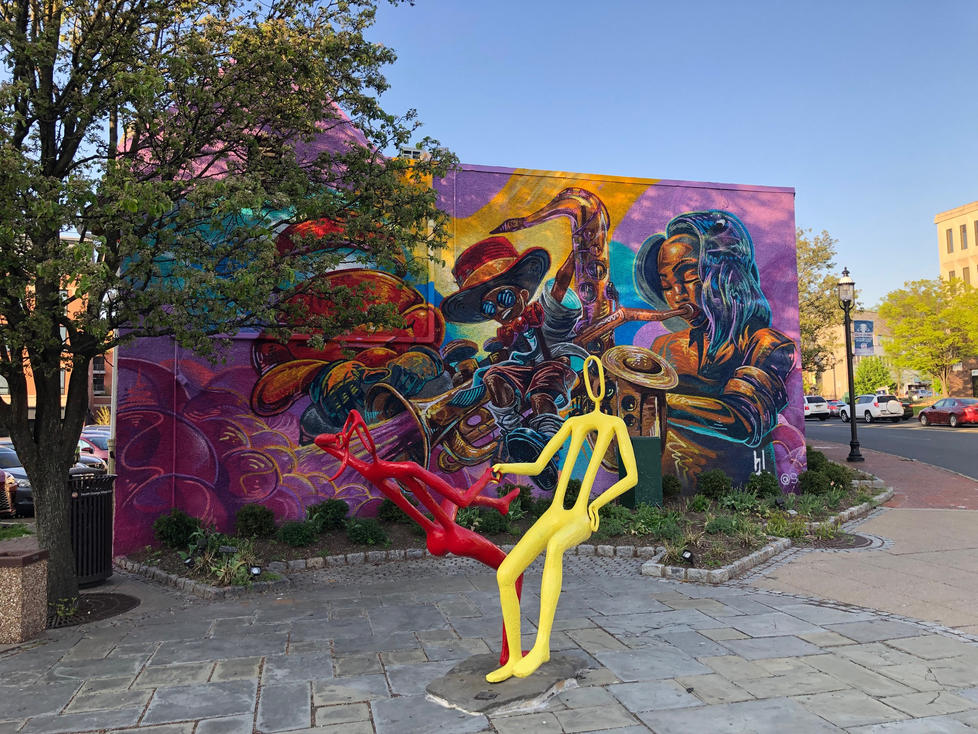Jay Lagemann ’66’s Sculptures Grace Reunions, Manhattan, and Beyond
Lagemann’s sculptures maintain an abstract quality that lends lightness, energy, and accessibility
Earlier this spring, sculptor Jay Lagemann ’66 traveled all the way to Thailand visit to bronze foundries. (He also went to the beach.)
“Right now, I’m at the fountain of youth for me,” says Lagemann, who explained that the “not quite normal” nature of his sculptures necessitates some in-person oversight at the foundries.

After Princeton, Lagemann avoided the Vietnam draft by earning a Ph.D. in mathematics from M.I.T. But the war left Lagemann — who worked at the Pentagon two previous summers — too disillusioned to pursue a traditional career.
Instead he spent a few years sailing around the world and writing a memoir, and eventually met his future wife, Marianne, and her twin daughters in New York. The first time he went to Marianne’s SoHo apartment, for a cocktail party, he left the crowd to go build things with the girls instead.
“I was in the loft part playing with the kids because I found them more interesting, actually,” Lagemann reflected, noting that he began sculpting when he met the girls.

Lagemann’s second permanent public installation on the Vineyard, a wiry, abstract portrayal of a family made of mirror polish stainless steel, will be done and ready to greet travelers at the Oak Bluffs ferry terminal before the summer. Since the 1990s, Lagemann has made multiple versions of the piece, titled “The Family.” It was initially inspired by President Bill Clinton and President Barack Obama’s visits to the Vineyard with their families.
“One thing about this style, just having the heads be ovals,” Lagemann explains. “Especially for our times these days, there’s absolutely no race, ethnicity. It’s not a portrait of a person.”
Lagemann’s sculptures maintain an abstract quality that lends lightness, energy, and accessibility to his work. Because families are so often his subjects, he hopes his work reminds viewers of their own relationships.
“With ‘The Swinging Jenny,’ you’ll see yourself in the guy and your daughter or your son in the swinger. Or you’ll remember when your father or mother was swinging you,” he reflects. “Now I’m realizing that I have this ability and it’s really energized me in my old age, because my sculpture gives people joy and happiness. And, you know, that’s rare.”From a Ph.D. in mathematics to sailing across the Atlantic, Lagemann certainly hasn’t followed a traditional path — especially for Princeton graduates. Yet despite feeling like an outsider at Princeton, he’s become a well-known staple of the Class of 1966 because of his “Hitchhiking Tiger” and “B Ball Tiger” sculptures, which debuted at his 45th and 50th reunions.
“When I was a kid, I never wanted to be a fireman or a doctor or a lawyer,” he says. “I wanted to be Jay. That’s the one thing I wanted all my life.”














1 Response
Howard Fredman ’66
1 Year AgoLageman’s Vibrant Sculptures
The sculpture of a dad swinging a child is remarkable: It is kinetic and vibrant.